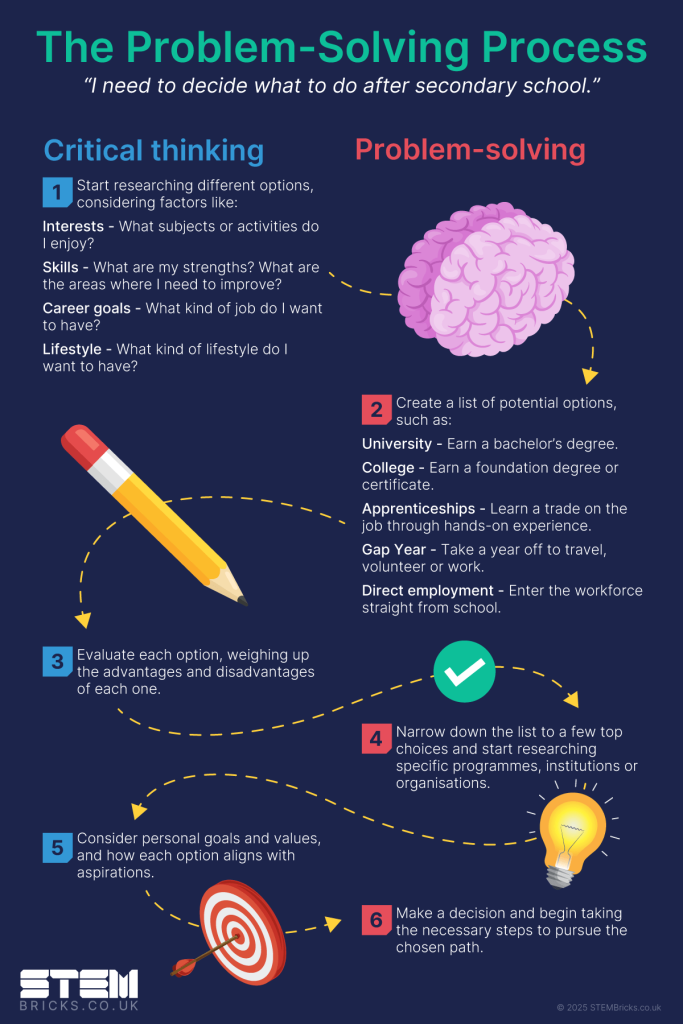Over the next few posts, we’re going to focus on some of our top reasons why STEAM is essential for a child’s development. This time, we’re exploring how STEAM fosters critical thinking and problem-solving skills.
Critical thinking helps us analyse information and evaluate different options, whilst problem-solving helps to apply these skills to find solutions. STEAM activities often involve complex problems that require innovative solutions, offering students opportunities to be bold, think unconventionally, explore different possibilities and develop original ideas.
Critical thinking and problem-solving are closely linked and can be described as an iterative process. Steps can be repeated any number of times, making slight modifications to explore how changing conditions impacts results. What does this look like in practice?
Imagine a teenage student who’s trying to decide what to do following their exams. Critical thinking could be used to identify the problem and explore options, while problem-solving skills enable them to make decisions and take action. This cycle can repeat as often as necessary as choices are refined and they can set their mind on a well considered plan.
Here’s how the process might look:

By engaging in STEAM activities, students can practice and develop their critical thinking and problem-solving skills in a fun, safe and engaging way. Skills such as questioning assumptions, considering different perspectives and making logical decisions are also areas that are built confidently as a result of STEAM.
In our next post, we’re delving into our second reason why STEAM is essential: Creativity and innovation.
Sign up to the STEMBricks newsletter to stay up-to-date with our latest blog posts, discover our bespoke lesson plans in collaboration with some of the leading companies in UK STEM, learn about career pathways and hear about special offers and promotions before anyone else!
Get building quickly with fast and FREE Delivery on all orders!
STEMBricks.co.uk is the LEGO Education branch of Getech, a multi-award winning technology partner for hundreds of schools, colleges and universities across the UK and Ireland since 1989.
Beyond supplying Educational Technology, our team of Certified LEGO Education Trainers help teachers, parents and businesses bring excitement to STEM subjects and inspire future generations of scientists and engineers!
Get more out of the LEGO Learning System with our monthly email newsletter sharing the latest updates, lesson ideas, learning supplements and special offers.
© 2025 Getech Ltd trading as STEMBricks.co.uk • LEGO, the LEGO logo and the Minifigure are trademarks of the LEGO Group. Used with permission.
Terms & Conditions • Privacy Policy • Modern Slavery Statement • Environmental Statement
To provide the best experiences, we use technologies like cookies to store and/or access device information. Consenting to these technologies will allow us to process data such as browsing behaviour or unique IDs on this site. Not consenting or withdrawing consent, may adversely affect certain features and functions.